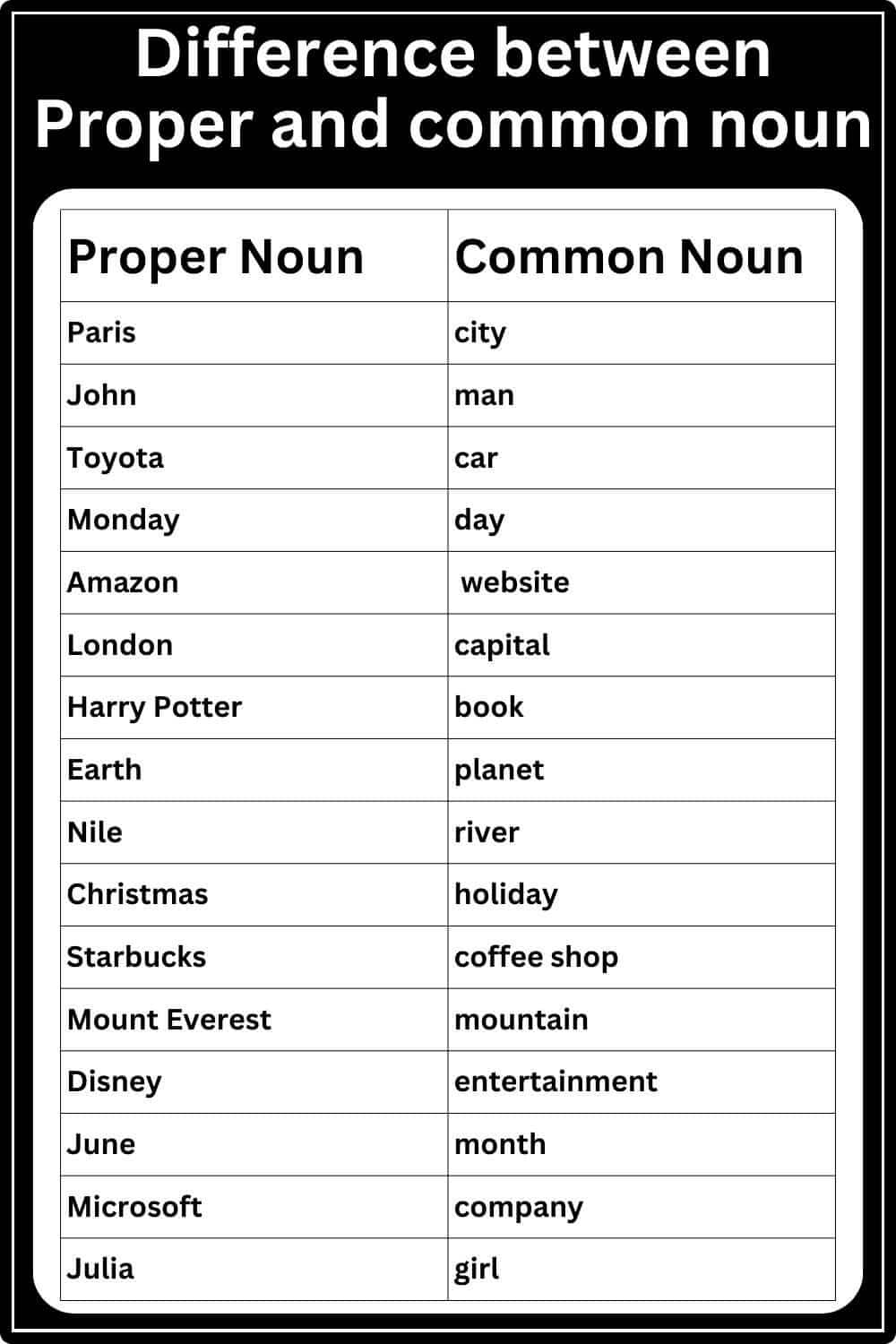In the English language, nouns play a crucial role in forming sentences. They are words that represent people, places, things, or ideas. Nouns are further classified into common and proper nouns, each serving a specific purpose in communication.
Common nouns are general names given to people, places, things, or ideas. They are not capitalized unless they appear at the beginning of a sentence. Examples of common nouns include “teacher,” “city,” “book,” and “love.” These nouns are used to refer to any person, place, thing, or idea without specifying a particular one.
Common and Proper Nouns Meaning
Proper nouns, on the other hand, are specific names given to people, places, things, or ideas. They are always capitalized, regardless of their position in a sentence. Proper nouns identify a particular individual, location, object, or concept. Examples of proper nouns include “Jennifer,” “London,” “Eiffel Tower,” and “Christmas.” These nouns are unique and specific, distinguishing them from common nouns.
It is essential to understand the distinction between common and proper nouns to communicate effectively. Common nouns are used in general contexts, while proper nouns are employed when referring to specific entities. By recognizing the differences between these two types of nouns, writers and speakers can convey their messages accurately and clearly.
In sentences, common nouns can be replaced with proper nouns to provide more specific information. For instance, instead of saying, “The teacher is friendly,” you could specify the teacher’s name by saying, “Ms. Smith is friendly.” By using proper nouns, you add clarity and precision to your sentences, making them more engaging and informative.
Common and proper nouns are essential components of language that help us express ourselves effectively. Whether in writing or speaking, understanding the nuances of these nouns enhances our communication skills and enables us to convey our thoughts with accuracy and clarity. By mastering the use of common and proper nouns, we can elevate the quality of our language and enhance our ability to connect with others.
In conclusion, common nouns represent general names for people, places, things, or ideas, while proper nouns denote specific names for the same entities. By distinguishing between common and proper nouns, we can enrich our language and improve our communication. Whether in everyday conversations or formal writing, the proper use of common and proper nouns enhances our ability to express ourselves effectively.
